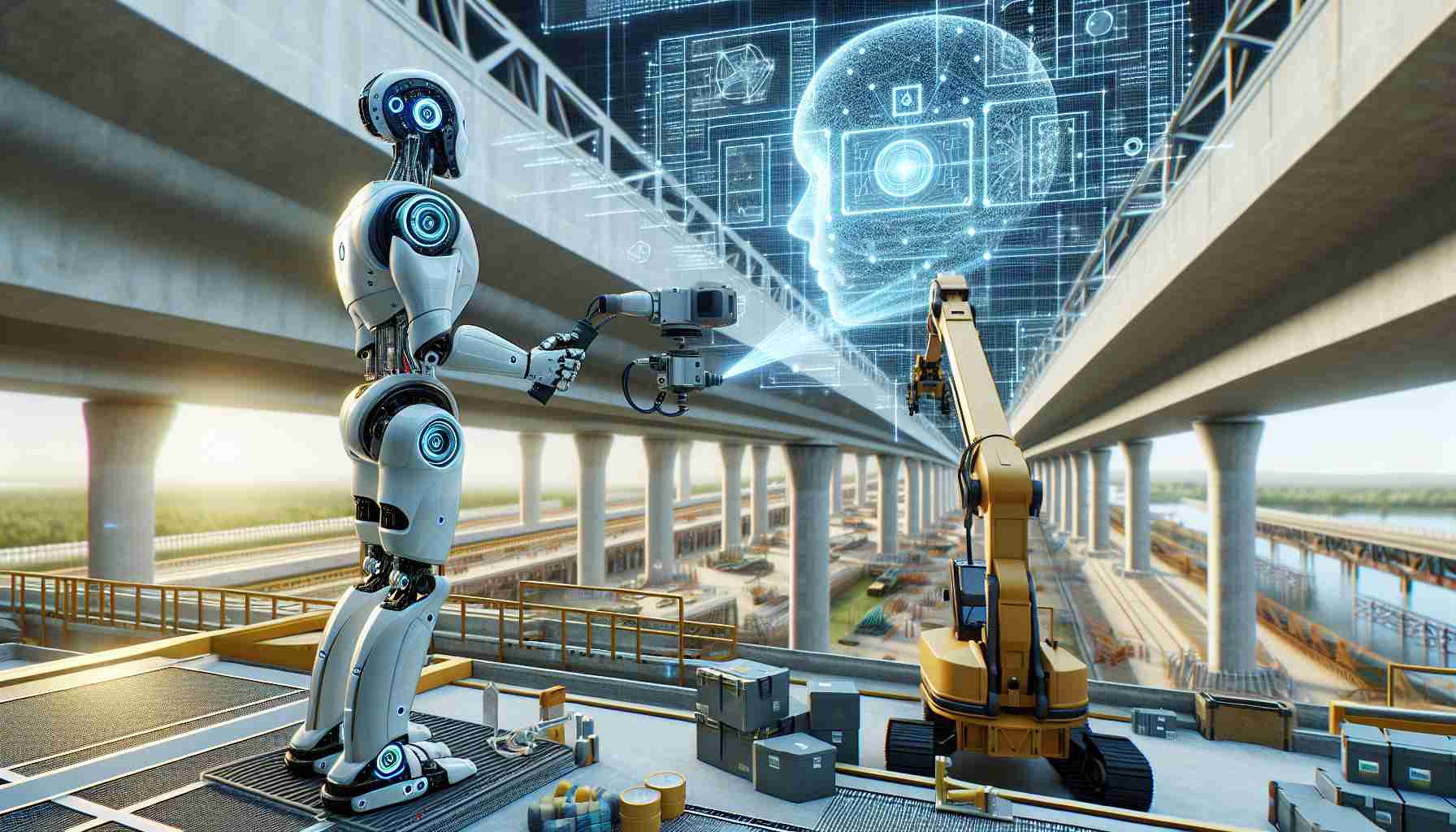A groundbreaking AI-guided robotic system has been developed by researchers at Drexel University in Pennsylvania, promising to transform the way structures and buildings are inspected for damage. With the aim of preventing failures, this innovative system combines computer vision and machine learning technologies to identify and assess potential problem areas.
The current state of infrastructure is a growing concern, with structures deteriorating faster than they can be maintained. Recent collapses and failures have highlighted the need for a more efficient and effective way to identify signs of deterioration and prevent catastrophic events. Traditional inspection methods are time-consuming and unable to cover every crack, making it difficult to identify dangerous signs of failure amidst normal wear and tear.
The new multi-scale system utilizes computer vision and a deep learning algorithm to identify problem areas. It then directs a series of laser scans to create a digital twin that can be used to accurately assess and monitor the damage. By streamlining the inspection process, the workload can be significantly reduced, allowing for targeted maintenance and repair efforts.
Instead of relying solely on physical measurements, the system uses a high-resolution stereo-depth camera feed and a convolutional neural network to identify crack-like patterns. This advanced technology is capable of spotting even the finest patterns and discrepancies in large volumes of data. Once the region of interest is identified, a robotic arm scans the area with a laser line scanner, creating a comprehensive three-dimensional image of the damaged area. Additionally, a Lidar camera scans the surrounding structure, providing further valuable information.
The benefits of this new system extend beyond the initial inspection. The digital twin model allows for the tracking of crack growth, providing bridge owners with a better understanding of the condition of their infrastructure. This enables them to plan maintenance and repair efforts effectively, ensuring the long-term structural integrity of the building or bridge.
While human inspectors will still play a role in decision-making, the introduction of AI-guided robotic assistants can greatly reduce their workload and decrease the likelihood of oversight or subjective judgment errors. By automating the inspection process, data collection can be limited to areas that require attention, improving overall efficiency and accuracy.
The researchers envision integrating this system into a larger autonomous monitoring framework that includes drones and other autonomous vehicles. This comprehensive approach aims to create a more intelligent and efficient system for maintaining structural integrity across various types of infrastructure.
Real-world testing and collaboration with industry and regulatory bodies will be crucial for the practical application and continuous improvement of this transformative technology. With the potential to revolutionize structural inspection, this AI-guided robotic system signals a new era in preventive maintenance and repair efforts for aging infrastructure.
FAQ Section:
1. What is the AI-guided robotic system developed by researchers at Drexel University?
– The AI-guided robotic system is a groundbreaking technology that combines computer vision and machine learning to inspect and assess structures and buildings for damage.
2. How does the system identify potential problem areas?
– The system uses computer vision and a deep learning algorithm to identify crack-like patterns and discrepancies in data gathered from high-resolution stereo-depth cameras and Lidar cameras.
3. What is the advantage of using this system over traditional inspection methods?
– The system streamlines the inspection process, making it more efficient and accurate. It can identify problem areas that may be difficult to detect with the naked eye or traditional methods.
4. How does the system create a digital twin of the damaged area?
– After identifying the region of interest, a robotic arm scans the area with a laser line scanner, creating a three-dimensional image of the damaged area.
5. What are the benefits of the digital twin model?
– The digital twin model allows for the tracking of crack growth, providing bridge owners with a better understanding of the condition of their infrastructure. This enables effective planning of maintenance and repair efforts.
6. How does this system reduce the workload of human inspectors?
– By automating the inspection process, the system limits data collection to areas that require attention. This reduces the workload of human inspectors and decreases the likelihood of oversight or subjective judgment errors.
7. What is the future vision for this system?
– The researchers aim to integrate this system into a larger autonomous monitoring framework that includes drones and other autonomous vehicles. This comprehensive approach aims to create a more intelligent and efficient system for maintaining structural integrity.
Key Terms and Definitions:
– Computer Vision: Computer vision is a branch of artificial intelligence that focuses on enabling computers to gain a high-level understanding of digital images or videos.
– Machine Learning: Machine learning is a subset of artificial intelligence that uses algorithms and statistical models to enable computers to learn from and make predictions or decisions without being explicitly programmed.
– Deep Learning: Deep learning is a subset of machine learning that uses neural networks with multiple layers to learn and extract complex patterns and representations from data.
Suggested Related Links:
– Drexel University
– Artificial Intelligence Overview
– Computer Society Digital Library
The source of the article is from the blog reporterosdelsur.com.mx

